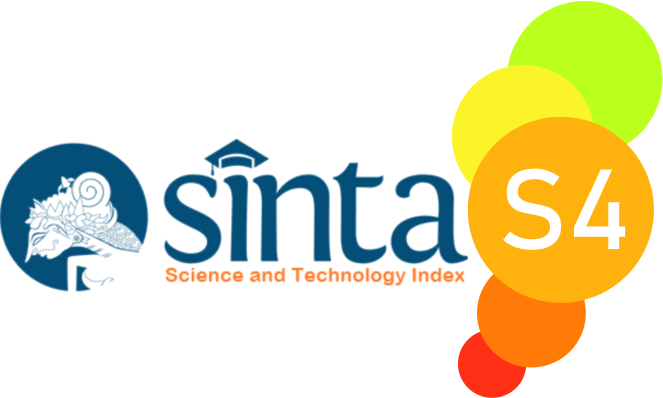Teaching Reading Using CIRC Method
The Challenges and the Benefits
Abstract
This research is aimed at describing the use of the CIRC (Cooperative Integrated Reading Comprehension) method to teach reading and finding the strengths and weaknesses of CIRC to teach reading to young learners. This research is applied in qualitative research with a descriptive analysis model. The data collecting is done by observation, interview, and documentation. In analyzing data, it is done by data reduction, data display, and conclusion drawing and verification. The result of this research can be concluded as follows the Implementation of CIRC Method to teach reading are: (1) partner reading, (2) story grammar and related writing (3) word out loud, (4) word meaning, (5) story retell, and (6) spelling. The advantages of CIRC method in teaching reading are first, the students are easy to understand the material. Second, the students have the motivation to learn to read more. Third, the situation of the class is fun. Fourth, students pay more attention and are more focused on learning. Meanwhile, the disadvantage of CIRC method in teaching reading is sometimes the students are confused by the teacher’s explanation and instruction
References
Aziz, I. N. (2020). The Use of CIRC strategy on students’ readingcomprehension skill. Journal of English Education and Technology, 01(03), 173–184. http://jeet.fkdp.or.id/index.php/jeet/issue/current
Durukan, E. (2011). Effects of cooperative integrated reading and composition (CIRC) technique on reading-writing skills. Educational Research and Reviews, 6(1), 102–109.
Hamra, A., & Syatriana, E. (2010). Developing a Model of Teaching Reading Comprehension. Teflin, 21, 27–40. https://www.researchgate.net/publication/232153478_The_Assessment_of_Reading_Comprehension
Journal, P. E. S. L. (2015). Looking at CIRC through Quantitative Lenses: Can it Improve the Reading Comprehension of Filipino ESL Learners? Wilkinson Daniel Wong Gonzales and Patrisha Lliane Torres De La Salle University. 15(July), 67–98.
Karafkan, M. A., & Aghazadeh, Z. (2015). Investigating the effects of group investigation (GI) and cooperative integrated reading and comprehension (CIRC) as the cooperative learning techniques on learner’s reading comprehension. International Journal of Applied Linguistics and English Literature, 4(6), 8–15. https://doi.org/10.7575/aiac.ijalel.v.4n.6p.8
Maruf, N., & Anjely, A. M. R. (2020). Utilizing Cooperative Integrated Reading and Composition (CIRC) with mobile Learning to Enhance Students’ Reading Comprehension. British (Jurnal Bahasa Dan Sastra Inggris), 9(2), 10. https://doi.org/10.31314/british.9.2.10-19.2020
Mistar, J., Zuhairi, A., & Yanti, N. (2016). Strategies Training in the Teaching of Reading Comprehension for EFL Learners in Indonesia. English Language Teaching, 9(2), 49. https://doi.org/10.5539/elt.v9n2p49
Muhassin, M., Annisa, J., & Hidayati, D. A. (2021). The Impact of Fix Up Strategy on Indonesian EFL Learners’ Reading Comprehension. International Journal of Instruction, 14(2), 253–270. https://doi.org/10.29333/iji.2021.14215a
Rahmawati, L., Padmawati, N., & Ratminingsih, M. (2014). the Effect of Circ Strategy and Achievement Motivation Toward Students ’ Reading Comprehension. E-Journal Program Pascasarjana Universitas Pendidikan Ganesha, 3(1980), 1–12.
Rochman, M. (2018). The IMPORTANCE OF TEACHING READING: IMPROVING STUDENTS’ READING COMPREHENSION IN EFL CONTEXT EMPHASIZED ON READING FLUENCY AND ACCURACY. JOURNEY (Journal of English Language and Pedagogy), 1(1), 6–14. https://doi.org/10.33503/journey.v1i1.91
Salam, S. (2017). Developing Needs Analysis Based-Reading Comprehension Learning Materials: A Study on the Indonesian Language Study Program Students. Advances in Language and Literary Studies, 8(4), 105. https://doi.org/10.7575/aiac.alls.v.8n.4p.105
Scott, W. A., & Ytreberg, L. H. (1990). Longman Keys to Language Teaching: Teaching English to Children. In Longman Publishing (p. 119).
Sepideh Moghaddas Jafari & Tengku sepora tengku mahadi. (2016). Reading To Children: the Importance and Advantages of the Issue. International Journal of English and Literature (IJEL), 6(4), 35–44. http://www.tjprc.org/view-archives.php
Slavin, R. E. (2014). Making cooperative learning powerful. Educational Leadership, 72(2), 22–26.
Slavin, R. E., Lake, C., Chambers, B., Cheung, A., & Davis, S. (2009). Effective reading programs for the elementary grades: A best-evidence synthesis. Review of Educational Research, 79(4), 1391–1466.
Sugiyono, P. D. (2015). Metode penelitian pendidikan (pendekatan kuantitatif, kualitatif, dan R&D)(Vol. 21). Bandung, Indonesia: Alfabeta, CV.
Zarei, A. A. (2012). The Effects of STAD and CIRC on L2 Reading Comprehension and Vocabulary Learning. Frontiers of Language and Teaching …...…………………………………………….…, 3, 161–173.
Copyright (c) 2022 Brigitta Septarini Rahmasari, Agnes Ery Swasti

This work is licensed under a Creative Commons Attribution-ShareAlike 4.0 International License.

Journey: Journal of English Language and Pedagogy by http://ejurnal.budiutomomalang.ac.id/index.php/journey/index is licensed under a Creative Commons Attribution-ShareAlike 4.0 International License.






